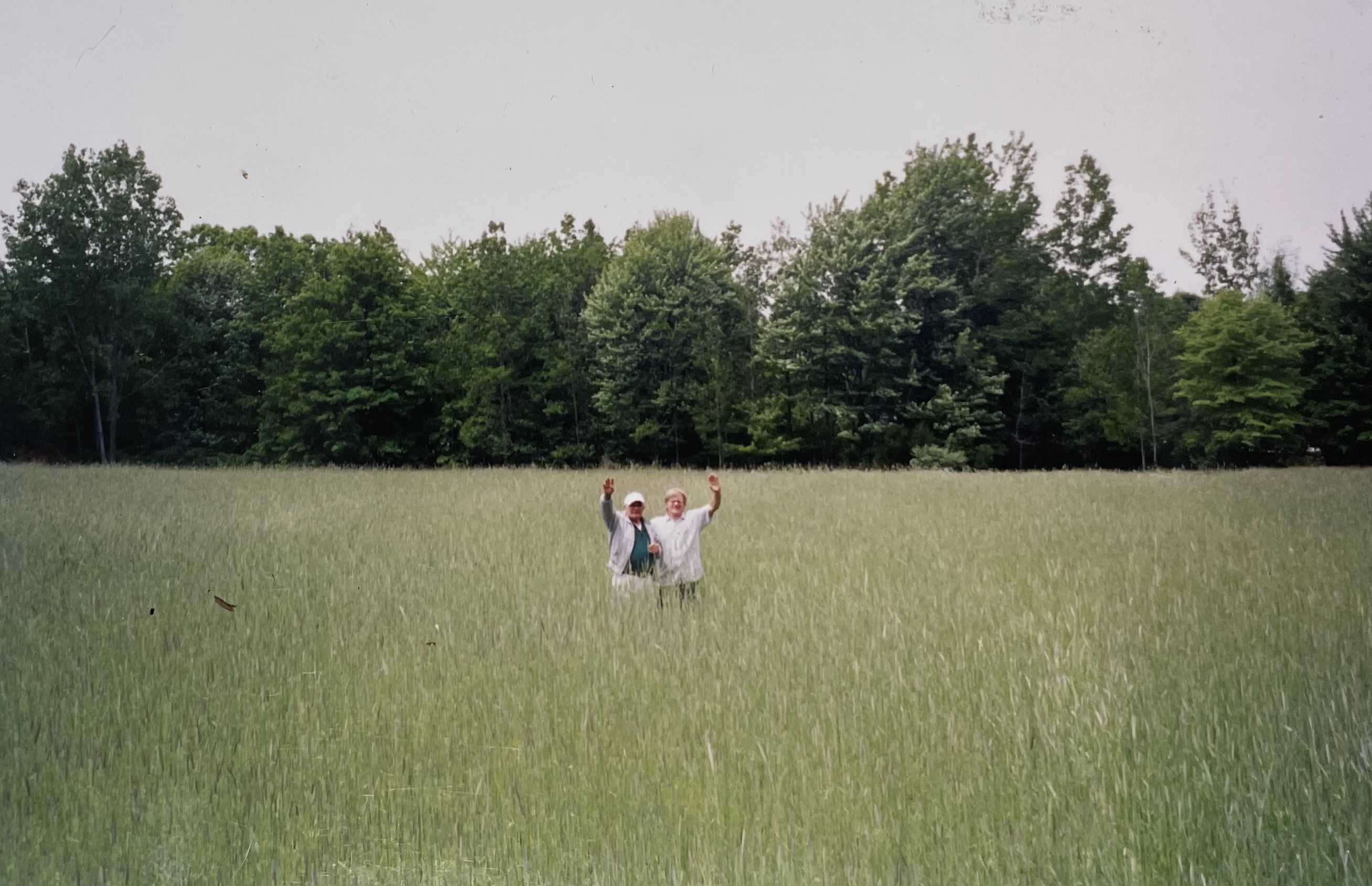
Many years ago, a close friend's mother gave me a jar of wild grape jam. I was shocked at how strong and delicious it was. Since she lived in the heart of Welsh's Concord grape country, I asked her why she bothered to collect the teeny wild grapes when she was surrounded by Concord grapes. The one word answer, "Flavor". The dark blue color and intense density of grape flavor made me start to taste test wild grapes where ever I went especially on family vacations. One place that yielded some interesting high yielding seedlings was Waugoshance Point near Sturgeon Bay, Lake Michigan west of Mackinaw City in northern Michigan. On this wind and water swept, rock strewn shallow peninsula had quite a few grapes skipping along the rocks. I thought maybe the flavor was due to the pure water and high mineral content of the soil. I selected a couple of the best seedlings from this group and put them in an arbor at the farm. They have been fruiting since 2021.
Blue Blaze High yielding selection that is lower in tartaric acid than most wild grapes. It is possible to enjoy these fresh too. Blue Blaze is not quite as tart as most wild grapes. Produces a incredibly dark blue juice rich in antioxidants. Incredibly vigorous vine, this selection needs twice the space as most cultivated grapes. Fruit is produced densely along the canes. Fruit clusters are small and loose but more densely packed with grapes compared to most wild grapes. Selected for its flavor and yield, Blue Blaze is one of only a few of 'pure' wild grape species that can be grown for juice, jelly and syrup production.
Order comes with seeds and dormant cuttings in the winter for rooting. Seeds are sent right away.
Germinating the Seeds: Grape seeds have a hydrophilic seed coat which takes a while to break down in the soil. This takes one year and may skip the first dormancy. Some sanding on the seed helps water percolate water into the seed and speed up the germination. You can use the sanding sponges which help hold the seed in place. Use a fine grit. Otherwise follow the more normal 38F to 40 F cold and moisture dormancy for 90-120 days. Sometimes they will pop in the refrigerator and this will cause them to germinate even when its cold. Lightly cover the seed with sand and watch for damp off so do not plant them too close together.
| Plant Specs |
| Genus & Species |
Vitis riparia |
| Seed Source |
Mostly Michigan from the northern and southwestern part of the state. Wild collected. Grown as seedlings at my farm in southwestern Michigan. |
| Hardiness |
Minus 30F or more. One of the most cold hardy species. |
| Height (ft) |
Super vigorous and can grow up to a hundred feet or more. Pruning is necessary |
| Pollination Requirements |
Said to be dioecious like persimmon. Ours are female selections that fruit without pollination from males. |
| Soil |
Sandy loam to sandy |
| Ease of Cultivation |
Seeds take two years to really pop. Once established, very vigorous. Blue Blaze as cutting grown fruits within two or three years. From seed, once the plants gets to 1/2 inch caliper flowering begins. One of the most practical grapes to grow for cover on fence as the foliage is so clean. On the downside, it is very vigorous and needs to be pruned yearly otherwise to most it becomes too much to handle and is removed. The yields are very good with Blue Blaze and worth cultivating for the rich flavor for juice and jelly. |
